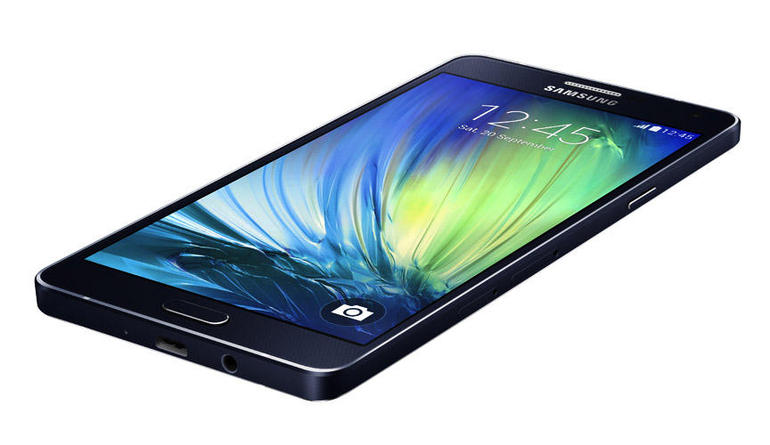
Samsung seems to be taking a page out of Apple’s book when it comes to the development and release of its latest installment in its Galaxy saga (and they’re smart to do so: Apple reported selling 74.5 million iPhones at the end of 2015, with many of those undoubtedly being the iPhone 6 and 6 Plus.) The Samsung Galaxy S6 and S6 Edge both hit shelves today, and many have high hopes that these two new entries into the smartphone market will inject some much-needed freshness into a brand that has been lacking in just that over the past few years. And they’re not wrong in their hopes – the S6 and S6 Edge are light-years ahead of the previous installments in the Galaxy line, boasting a sleek metal casing, 5.1-inch super AMOLED capacitative touchscreen, and 16-megapixel camera with optical image stabilization, to name but a few of the features. But will they be enough to wrestle control of the hearts of smartphone users away from Apple, who commands the lion’s share of street cred when it comes to smartphones? That remains to be seen, but here are five reasons why you should consider jumping the iOS ship and getting on board with Android if you’re in the market for a new phone.
Flexibility and customizability
Phones running Android operating systems are very flexible when it comes to interfacing with different devices. If you want to upload music to your phone, for example, you can do it just as easily with Windows Media Player as you can with iTunes. iPhones, on the other hand, are limited to using iTunes as their music uploading program, and you have to use Apple’s proprietary Lightning cable to connect to a device (Android phones can use any micro-USB cable). The same is true for photos and Apple’s iPhoto program. Android phones are flexible in more areas than that, though; since Androids are like mini-PCs, everything you can do on a PC, you can do on an Android, like downloading and unzipping huge files. They’re also customizable in ways that phones running iOS aren’t, like being able to add a variety of widgets to your homescreen or manipulating the way your apps look, which you can’t do with an iPhone unless you jailbreak it and risk turning your phone into a brick.
Efficiency and user-friendliness
Android phones oftentimes allow you to have several apps open on the screen concurrently. This will allow you to draft an e-mail while looking at a relevant document, for example, without having to constantly switch between two apps like you would have to do on an iPhone. Android phones also keep all notifications – app alerts, text messages, calendar events, e-mails – at the top of the screen, which makes it much easier to see and prioritize the items you need to respond to. iPhones have a screen you can pull down to view notifications, but it oftentimes can look messy, and you have to go through the physical motions of dragging down the screen and hunting through the different categories. Androids also boast a filing system that allows you to see and manipulate your files as if you were on a computer, whereas iPhones have no interactive filing system at all.
Ability to replace components
With an iPhone, what you see is what you get. There isn’t any slot for extra storage, and you can’t replace the battery. You can’t even take the back cover of an iPhone off without special tools. With Android phones, not only can you snap off the back cover to get a look at the phone’s guts, you can replace the battery yourself AND you can insert a microSD card (which are usually very cheap and can give you up to 128GBs of extra storage) if you’re looking for more storage than what your originally thought you would need.
More app options
Google Play Store boasts roughly 100,000 downloadable apps than the Apple App Stores does. You can also download apps directly from a web browser, without the need to go into Google Play, and if you learn how to sideload APKs (which isn’t that hard, honestly), you can even download apps that are in beta or haven’t received an update from Google Play. With an iPhone, you have to launch either iTunes or the App Store app to download an app, and you can only download apps that exist within the App Store. It’s also worth mentioning that Google Maps, the leading navigation app on the market, is the default app on Android phones, while you have to download Google Maps on an iPhone to compensate for its lackluster Maps app, and you can’t even set it to default.
More smartphone choices
Even if you don’t choose the latest release like the S6 or S6 Edge, Android has dozens of options to choose from. If you want something that functions like a mini-tablet, you can go for the Samsung Galaxy Note 4, which comes complete with a stylus. If battery life is paramount for you, you can check out the Huawei Ascend Mate 2, which can give you a whopping 14 hours and 43 minutes of usage, and can even be used to charge other devices if you buy an optional cable. If you want to get on iOS, you’re bound to choosing between two versions of the same phone that can basically do the same things, or an older model of that same phone. With Android, your smartphone horizons are broadened, while iOS limits them.
Did we convince you to make the move over? We sure as hell convinced ourselves.
By: Dariush Azimi















-300x169.jpg)









